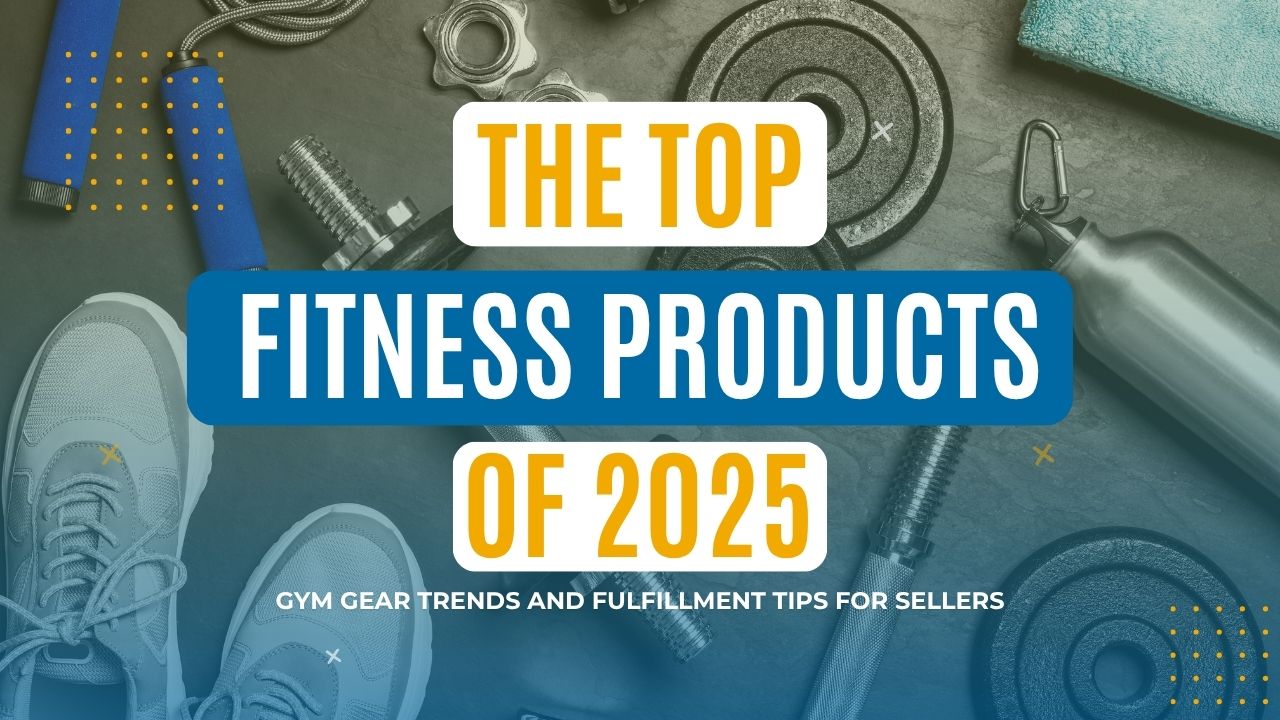
The world of fitness e-commerce is booming in 2025, with consumers spending heavily on at-home workout gear, tech-infused gym gadgets, and activewear. In fact, fitness remains one of the most resilient and rapidly growing e-commerce niches heading into 2025[1].
This article explores the top fitness products in e-commerce today and the gym gear trends behind their popularity. We’ll break down the most popular product categories, from smart home gym equipment to recovery tools, and analyze the consumer trends (like the post-pandemic home gym boom and the rise of wearable tech) driving these purchases.
Finally, since selling fitness items comes with unique challenges, we’ll offer Fitness fulfillment and shipping tips tailored to fitness products, plus an actionable checklist to help U.S. ecommerce sellers optimize logistics and customer satisfaction in this niche.
Jump right in: Top Fitness Products Sold Online in 2025
- At-Home Gym Equipment: Compact and Connected Gear
- Wearable Fitness Technology and Smart Devices
- Recovery and Wellness Tools
- Fitness Apparel and Accessories
- Consumer Trends Driving Fitness Purchases in 2025
- Fulfillment and Shipping Tips for Fitness Products
- Checklist: Optimizing Your Fitness Product Fulfillment
Top Fitness Products Sold Online in 2025
At-Home Gym Equipment: Compact and Connected Gear
One of the biggest trends of 2025 is the sustained demand for at-home gym equipment. Even as gyms have reopened, many consumers have embraced hybrid workout routines, splitting time between fitness centers and home workouts. Spare bedrooms and basements have turned into exercise studios[2], so shoppers are looking for compact, adaptable equipment that fits in small spaces.
Sales of home gym essentials remain strong, adjustable dumbbells, for example, have become must-have items as more consumers establish their own home gyms[3].
Products that offer multiple uses or fold away easily are especially popular among apartment dwellers and space-conscious buyers (e.g. foldable benches or all-in-one gym systems are “gaining buzz in urban markets”[4]).
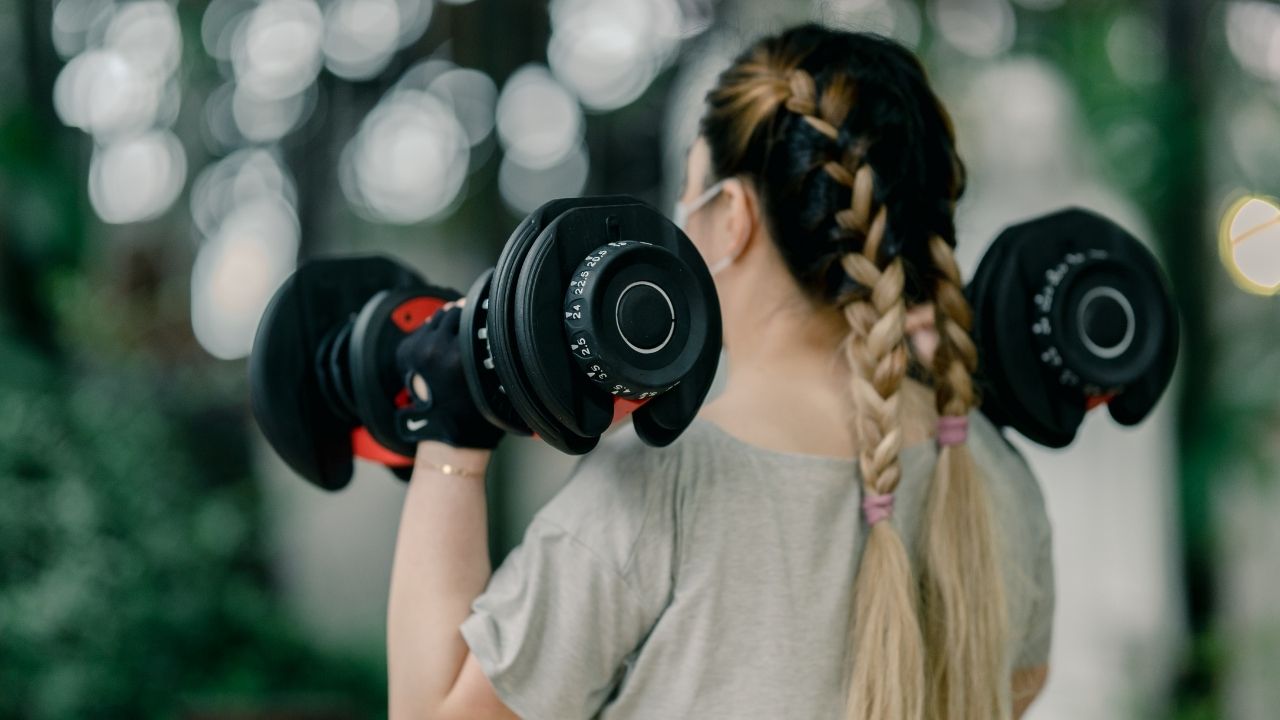
Top at-home fitness products in 2025 include:
- Adjustable Weight Sets (Dumbbells/Kettlebells): Space-saving weights that can dial up or down are top sellers, considered a “home gym essential” in 2025[5]. Consumers will pay a premium for these all-in-one sets that replace a full rack of fixed weights[6].
- Portable Cardio Machines: Compact treadmills, folding stationary bikes, and rowing machines remain in demand. Rowers, for instance, have shown strong holiday season sales[7] as gift purchases for home gym enthusiasts.
- Doorway and Modular Equipment: Items like pull-up bars (which attach to door frames) and resistance cable systems are popular for their convenience. Pull-up bars even see seasonal upticks in winter when people exercise indoors more[8].
- Smart Home Gym Systems: High-tech equipment that integrates screens or apps (e.g. interactive mirrors, connected spin bikes) caters to those wanting an immersive, coached experience at home. While the “smart home gym gear” trend kicked off during the pandemic, it’s still hot in 2025[9] as brands add new features and content.
Adjustable dumbbell sets have surged in popularity as at-home workout essentials, offering a range of weights in one compact design[3]. Sellers often bundle these with benches or mats to create starter home gym kits.
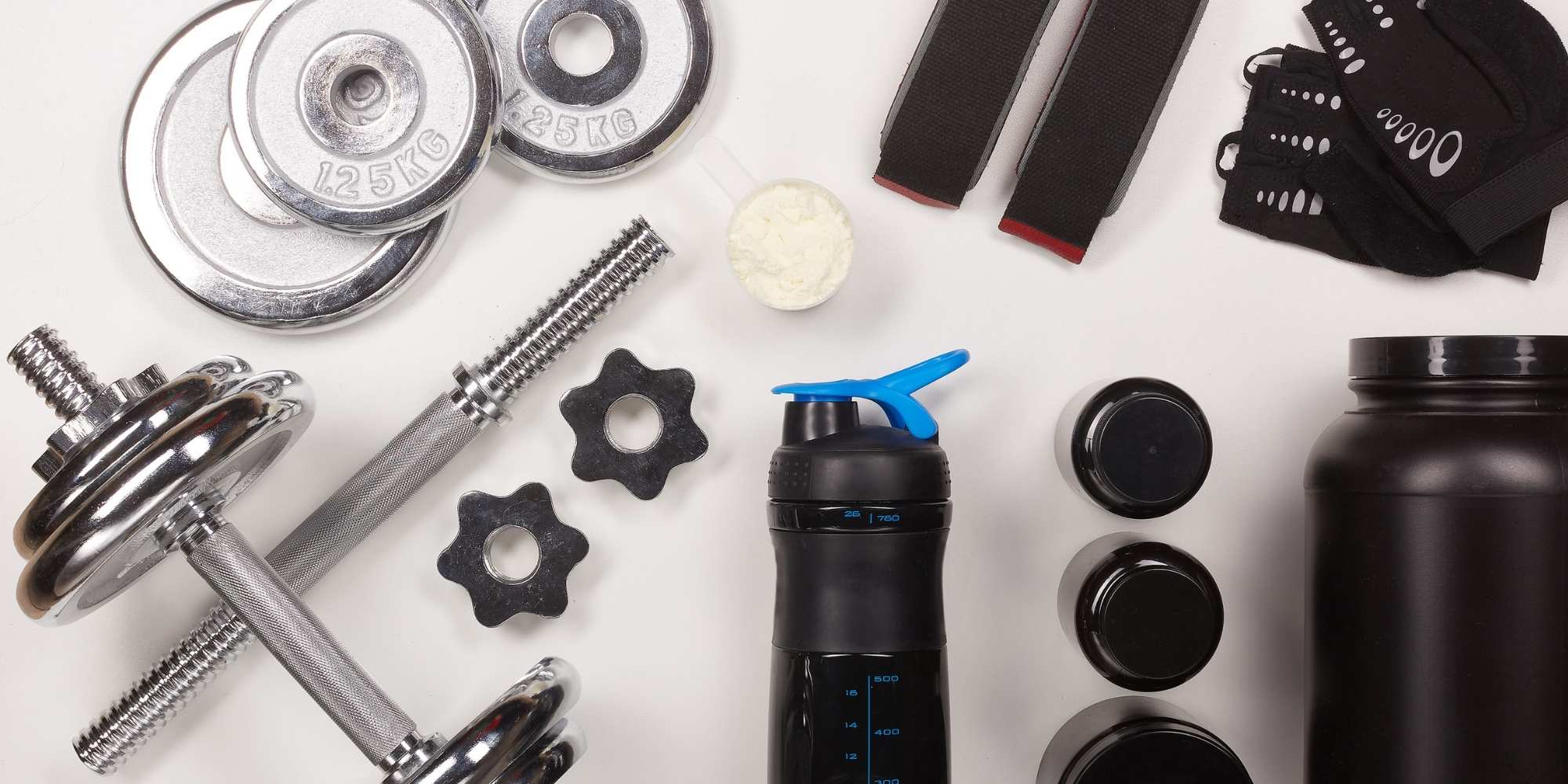
Shifts from previous years:
During 2020-2021, home gym equipment sales skyrocketed (out of necessity), and while that peak has leveled off, demand remains well above pre-pandemic levels. Many people have permanently adopted remote workouts or a hybrid fitness lifestyle, driving ongoing sales of home equipment[2].
Today’s buyer is choosier, however, they favor gear that is multifunctional and connected. For instance, rather than buying a rack of dumbbells, they might opt for one adjustable set with a companion app for tracking workouts.
Gamification is also emerging:
Some new cardio machines come with interactive gaming experiences to make workouts fun[10]. In short, convenience and smart integration are key selling points for at-home gym gear in 2025.
Wearable Fitness Technology and Smart Devices
It’s no surprise that wearable fitness tech is huge in 2025, these products blend consumers’ love of gadgets with their fitness goals. In fact, wearable technology was named the #1 fitness trend for 2025 by the American College of Sports Medicine[11]. Online, shoppers are snapping up smartwatches, fitness trackers, and connected workout gadgets at record rates. Global searches for smart fitness watches are enormous (over 2 million searches per month for smartwatches, indicating surging demand[12]).

Popular wearable and tech-enabled products include:
- Smartwatches & Fitness Trackers: Devices like the Apple Watch, Fitbit, and Garmin watches remain top sellers, as they monitor everything from steps and heart rate to sleep. These “electrical gadgets show no signs of slowing down” in demand[13]. The variety of models and price points means there’s a smartwatch for every customer segment, driving broad market penetration.
- Bluetooth Heart-Rate Monitors: Chest strap monitors and arm-band sensors that pair with apps (or gym equipment) appeal to serious athletes who want accuracy. These have a loyal niche following because they offer more precise data than wrist trackers[14].
- Posture and Form Sensors: A newer trend is wearable sensors (clips or smart clothing) that vibrate to correct your posture or form during exercise[15]. As long hours at desks give people “tech neck,” these devices have found a market among wellness enthusiasts seeking better alignment.
- App-Connected Accessories: Even classic accessories are getting smart makeovers. Smart jump ropes count your jumps and sync with phone apps, turning a simple exercise into a game or metric-driven challenge[16]. We’re also seeing “Bluetooth-enabled resistance bands” that log your reps and tension[17], a perfect marriage of portability and data tracking.
Wearable fitness tech like smartwatches are top-selling products in 2025. Industry surveys rank wearable technology as the #1 fitness trend, reflecting consumers’ appetite for data-driven workouts[11]. Modern fitness trackers monitor heart rate, sleep, calories, and more, helping users personalize their training.
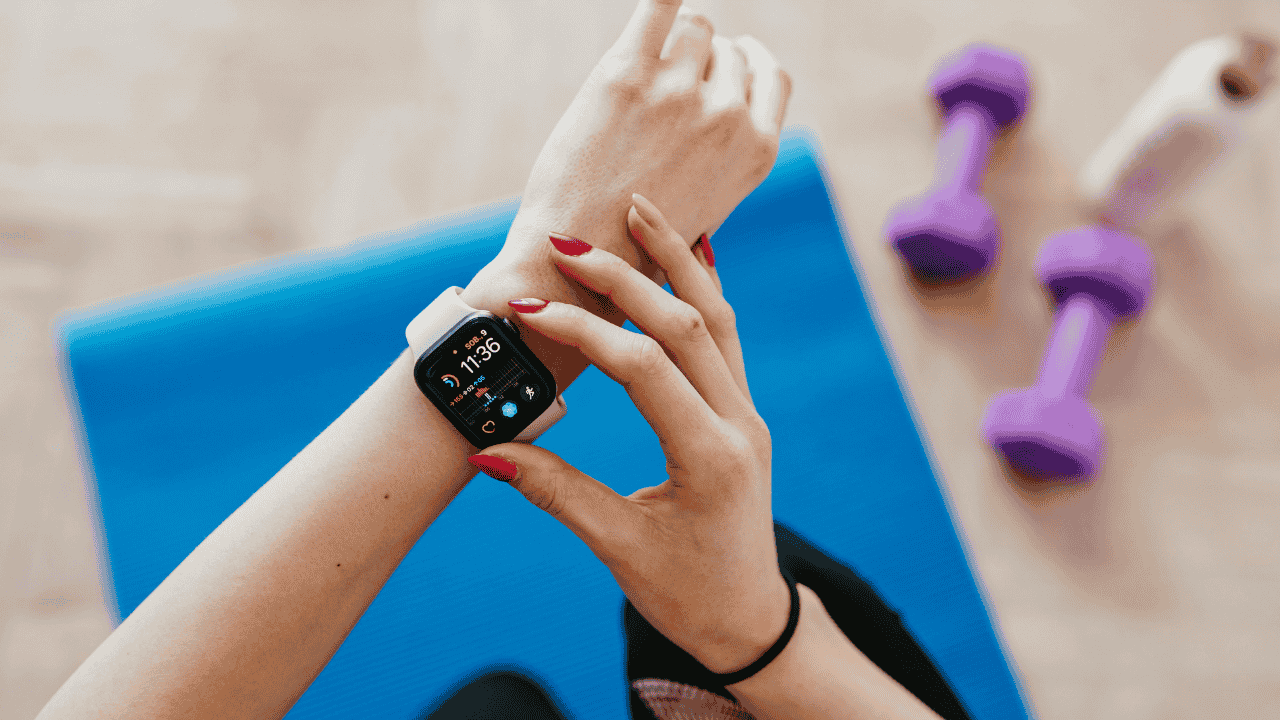
Why this category is booming:
Consumers today expect real-time feedback on their performance. Digital health apps and fitness streaming services have primed people to desire metrics for every run, ride, or rep. Wearables fulfill that need by providing data-driven insights and coaching tips instantly on your wrist[17].
Additionally, the tech industry releases frequent upgrades (new watch models, new sensor types), which generates continual excitement and upgrade cycles. Prices have also become more accessible, there are budget fitness bands under $50, bringing more first-time buyers into the market.
The social aspect is growing in popularity:
Many wearables integrate with communities or challenges (e.g. sharing your step count), tapping into users’ competitive and social motivations. For online sellers, wearable tech is a sweet spot: these items are relatively small (easy to ship) and perennially in demand as technology evolves.
Managing Fulfillment doesn’t have to be a hassle.
Partnering with a 3PL like eFulfillment Service means you can focus on growing your business while we handle the details. Request a Free Quote Today!
Recovery and Wellness Tools
Beyond the high-intensity workouts, recovery tools have exploded in popularity. Shoppers have realized that rest and recovery are as important as exercise for reaching fitness goals.
Active recovery gear, think massage devices, foam rollers, compression aids, has seen heightened interest as people seek to prevent injury and reduce soreness[18]. In fact, industry observers note that foam rollers and massage guns have become very popular over the last year and will only become more so[19].
In 2025, consumers aren’t just buying a yoga mat; they’re also adding a foam roller and percussive massager to their cart to round out their home gym.
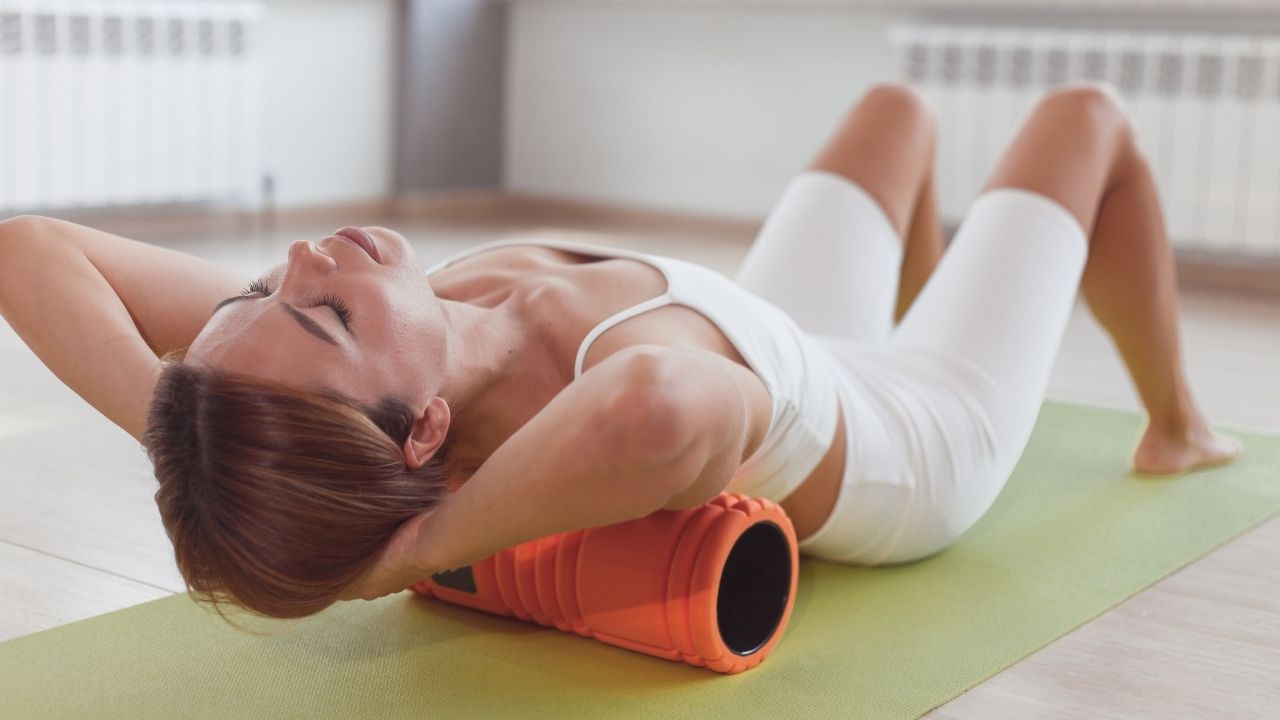
Top-selling recovery and wellness products include:
- Massage Guns (Percussive Massagers): Handheld massage guns (like Theragun or Hypervolt) deliver rapid pulses to muscles to boost blood flow and relieve knots. These have become “as ubiquitous as foam rollers in home recovery kits, thanks to endorsements from athletes and physical therapists”[20]. The U.S. market for these devices continues to grow as even casual exercisers look for pro-level recovery at home.
- Foam Rollers & Roller Sticks: A staple for myofascial release, foam rollers come in various densities and even new vibrating versions for deeper tissue massage[21]. With so many people experiencing post-workout tightness (or just stiffness from sitting all day), foam rollers enjoy steady demand year-round. (Notably, one source calls them an “evergreen” item for beginners and athletes alike[22].)
- Compression Therapy Gear: This includes things like compression boots for legs (inflatable sleeves that simulate sports therapy sessions) and compression sleeves for arms or knees. Once seen only in pro sports clinics, brands now market at-home compression boots that endurance athletes are eager to invest in[23]. Even cold plunge tubs, used for ice bath therapy, have gone viral on social media, driving up sales of personal cold therapy tubs in 2025[24].
- Yoga Props & Mobility Aids: Items that assist with stretching and mobility are selling well as part of the recovery trend. These range from simple yoga straps and blocks to more specialized tools like massage balls, percussive neck massagers, or even red-light therapy devices for muscle recovery. Consumers are building out a full “recovery corner” in their home gym, not just buying one tool.
It’s worth noting the consumer mindset shift with this trend: there’s greater awareness that recovery is integral to progress. After intense HIIT or weight sessions, people now actively seek tools to help them “come back stronger more quickly,” as one trainer put it[25]. This focus is partially driven by an older demographic entering fitness (who might need more recovery) and by social media/fitness influencers normalizing recovery routines.
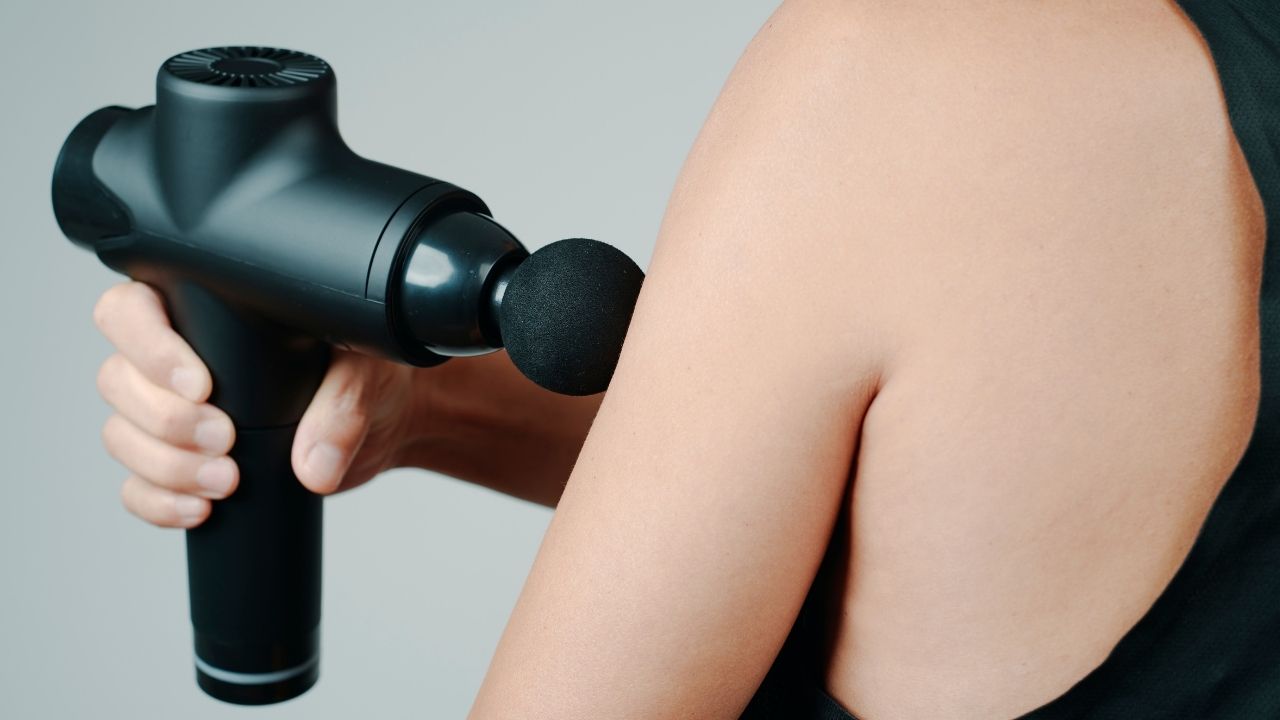
For ecommerce sellers, offering these recovery products can increase average order value (e.g. someone buying a set of resistance bands might also add a massage ball and stretching strap). Education is key, content that explains the benefits of, say, using a foam roller to avoid injury can help drive sales.
The bottom line is that wellness and recovery are a core part of fitness shopping in 2025, right alongside shoes and weights.
Lower Your Costs with Smarter Fulfillment.
Partner with eFulfillment Service to move inventory faster and free up cash flow. We help Start-Ups optimize operations so products don’t sit on shelves. Request a Free Quote today!
Fitness Apparel and Accessories
No fitness product roundup would be complete without fitness apparel and accessories, the workout clothes and small gear that are ubiquitous among consumers. Activewear has effectively become everyday wear, blurring the line between gym clothing and casual fashion.
In 2025, fitness apparel is a top-selling category online, fueled by the ongoing athleisure trend (people wearing leggings, joggers, and athletic tops in daily life). In the U.S. alone, the fitness apparel market is enormous, projected to reach about $103 billion in 2025[26], which shows how much opportunity this space holds for sellers.
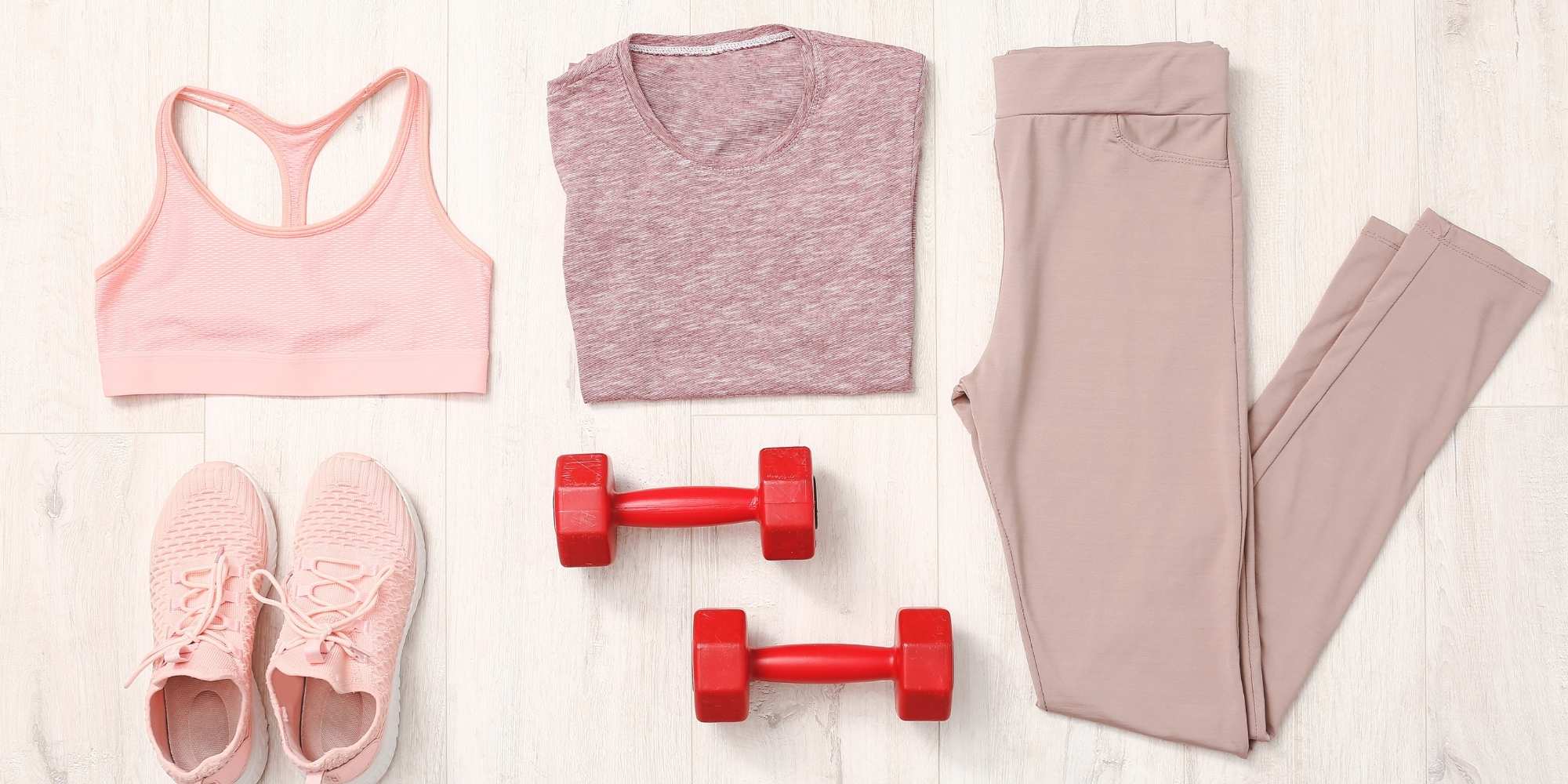
Popular apparel items and accessories include:
- Athleisure Clothing: This covers leggings, yoga pants, sports bras, moisture-wicking tops, and more. “Fitness clothing is a top-selling option in 2025” and it’s not limited to hardcore gym-goers[27]. Thanks to the fashion aspect, practically everyone (especially women 18, 40) now owns leggings or athletic wear for daily comfort[28]. High-waisted leggings and matching sets are especially on-trend, offering fashion plus function all year[29].
- Footwear and Wearables: Sneakers designed for training or running are perennial bestsellers in online sports retail. Also, accessories like fitness gloves, training socks, and wearable tech (covered above) intersect this category. Many e-commerce fitness brands cross-sell apparel with tech (for example, a smartwatch listing might recommend sweatband accessories or wireless sport earbuds).
- Yoga & Workout Accessories: Items like yoga mats, gym bags, water bottles, and resistance bands fall here. Some of these blur into equipment, but in e-commerce they’re often sold by apparel or accessory brands. Yoga mats in particular are high-demand year-round[30], as they are fundamental to home workouts and classes. Lightweight resistance bands are another “most popular at-home workout gadget” with evergreen demand[31], buyers love that they’re affordable, portable, and versatile.
- Trendy Extras: Each year brings a few hot accessory trends. In 2025, examples include weighted jump ropes (adding intensity to cardio, with sales spiking in summer[32]) and ankle/wrist weights, stylish wearable weights popularized through social media that double as a workout tool and fashion statement[33]. Sustainable and eco-friendly gear is also noteworthy: “eco-friendly yoga mats” made of natural cork or recycled materials are attracting eco-conscious consumers willing to pay a premium[34].
Athleisure and fitness apparel remain huge in e-commerce. Comfortable leggings, sports bras, and workout sets serve both gym sessions and everyday wear, driving a U.S. activewear market expected to top $100 billion in 2025[26]. These products merge style with function, and shoppers often buy multiple colors and styles.
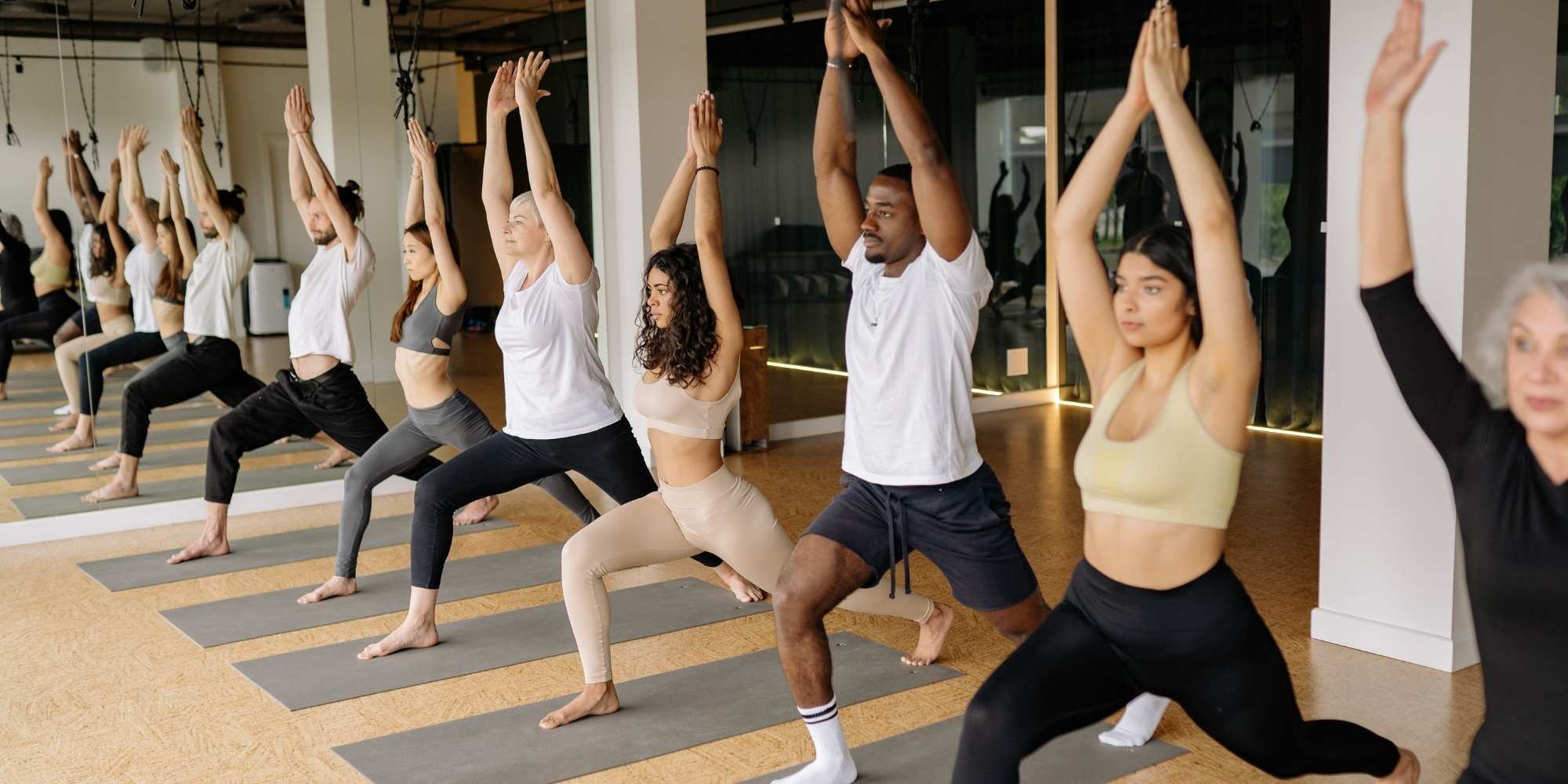
Key points for apparel sellers:
Fit and comfort are huge, shoppers often buy multiple sizes or styles to try on, which leads to higher return rates (online apparel returns can average ~20, 30%[35]). This means e-commerce sellers should provide detailed size charts, high-quality images, and even customer reviews about fit to help shoppers choose the right size and reduce returns.
Another factor is seasonality:
While athleisure is popular year-round, certain apparel items see spikes at specific times (e.g. demand for shorts and tank tops rises in spring/summer, whereas long-sleeve tops and thermal leggings sell more in winter).
Overall, the apparel segment is both lucrative and competitive, so brands that differentiate with unique designs, inclusive sizing, or sustainable fabrics can capture a devoted customer base. On the accessory side, small add-on items like sweatbands, foam rollers, or water bottles can be great for upselling alongside bigger purchases, enhancing the customer’s overall basket.
Consumer Trends Driving Fitness Purchases in 2025
Understanding why these products are selling is as important as knowing what is selling.
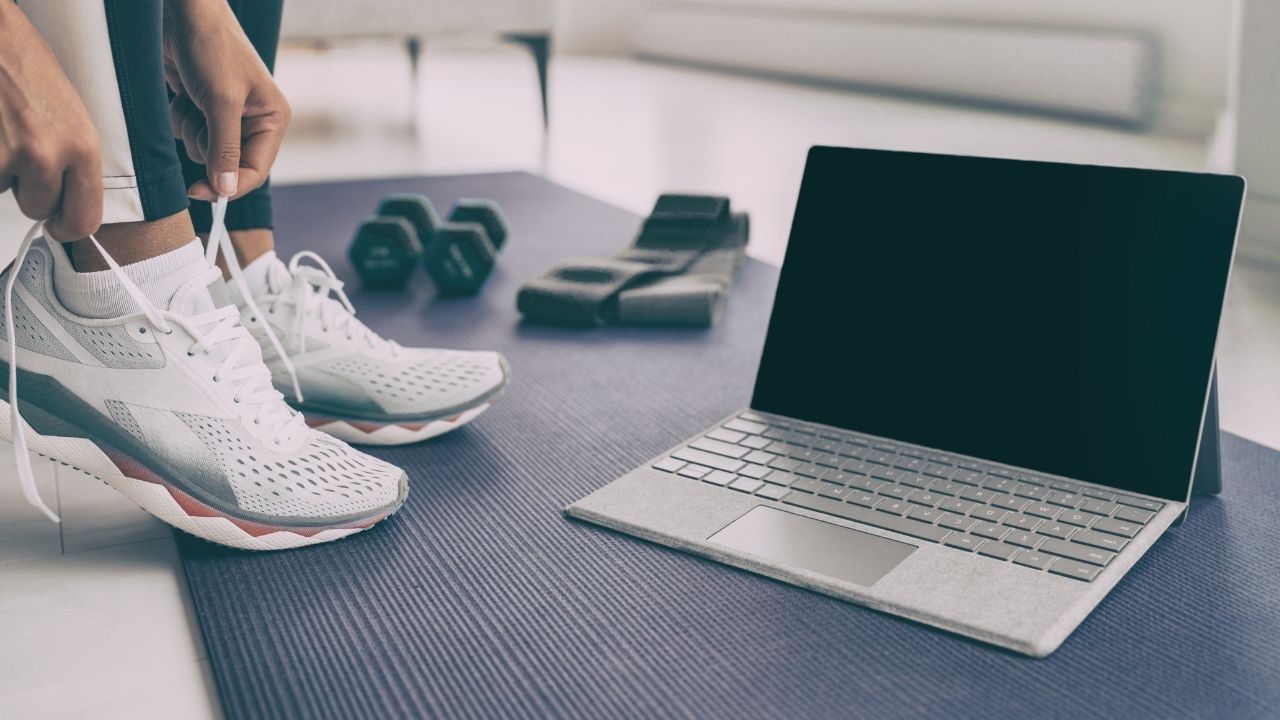
Several consumer trends are fueling the fitness e-commerce boom in 2025:
Rise of Home Workouts & Hybrid Routines:
The pandemic fundamentally changed workout habits. Many consumers built home gyms in 2020-21 and discovered the convenience of home workouts.
Even as gyms rebounded, people now often adopt a hybrid approach, attending the gym some days while doing quick workouts at home on others. This sustained at-home focus drives ongoing demand for home equipment and accessories.
Compact, stowable gear is especially popular since not everyone has a dedicated gym room[2].
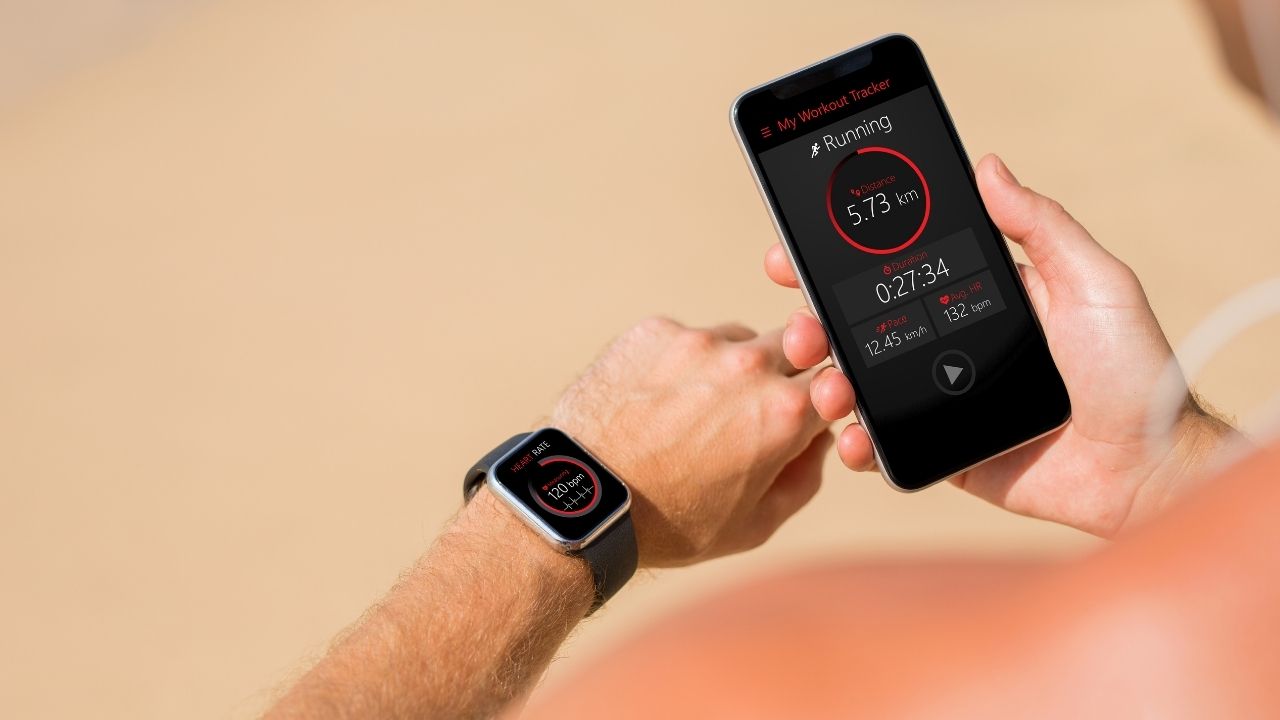
Tech-Integration and Data-Driven Fitness:
Today’s fitness enthusiast is increasingly tech-savvy, expecting fitness to integrate with their digital life. The dominance of wearables and fitness apps means consumers seek products that can connect, track, or “smartify” their workouts.
This trend drives innovation in traditional gear (for example, dumbbells that count reps or shoes with smart insoles) and keeps wearable tech sales high. As ACSM noted, digital tech has “become more critical to how we design and evaluate fitness”[11], meaning products with a tech angle have a strong appeal.

Holistic Health and Recovery Focus:
Another shift is toward holistic wellness, people aren’t just chasing strength or aesthetics; they want to feel good and avoid injury. This mindset means recovery tools, nutrition supplements, and low-impact exercise gear are on the rise.
The popularity of yoga and meditation has also fed into fitness trends (e.g. more people doing yoga or Pilates for mental health benefits[36]).
Active recovery is now mainstream: retailers see increased interest in foam rollers, stretching equipment, massage devices, etc., as consumers prioritize muscle recovery and injury prevention[19].

Seasonal Motivation Spikes:
Consumer buying patterns for fitness gear often follow seasonal trends. There’s always a New Year’s resolution surge in early January, a reliable boom where everything from treadmills to protein powders sees a sales uptick. (For example, yoga balls are noted as a “reliable New Year fitness seller”[37].)
Spring and summer bring waves of interest in outdoor and weight-loss related gear (think running shoes, jump ropes, fitness apparel for warmer weather). Summer specifically can boost sales of portable gear like jump ropes or resistance bands as people exercise outside[32].
The late fall and holidays are another peak season, as fitness products are popular gifts, high-ticket items like exercise machines or smartwatches often see strong holiday performance[7]. Savvy sellers plan inventory around these cycles to meet demand.

Social Media Influence:
Lastly, we can’t ignore the role of social media trends. A single viral TikTok video can create overnight demand for a product like a weighted hula hoop or a new ab roller.
In 2025, platforms like TikTok and Instagram continue to popularize niche fitness gadgets (for instance, the surge in interest around cold plunge tubs came largely from viral challenges[24]).
E-commerce sellers watch these trends closely, when something starts trending online, having it in stock (or a similar alternative) can lead to a sales windfall.
In summary, the driving forces are convenience, technology, health consciousness, timing, and digital influence. Ecommerce businesses that align their product offerings and marketing with these trends are capturing the most sales. Now, with the product landscape and trends covered, let’s shift to the operational side: how to fulfill and ship these popular items efficiently.
Fulfillment and Shipping Tips for Fitness Products
Selling fitness gear online is exciting, but fulfilling orders in this niche comes with specific challenges. From heavy dumbbells to oddly shaped foam rollers, these products test your shipping processes.

Below are fulfillment and shipping tips tailored for ecommerce sellers handling fitness products:
Packing and Shipping Heavy Gear:
Weights, kettlebells, and machines are literally heavy, which makes shipping them more complex and costly. Improper packaging can lead to damage (even though a cast-iron weight won’t break, it can scratch or crack its coating, and it can bust through a weak box)[38].
To ship heavy items safely, use reinforced packaging, double-wall corrugated boxes or even wooden crates for very heavy machinery[39]. Wrap each weight plate or metal part in padding (bubble wrap, foam sheets) to prevent them clanging together. It’s also wise to add moisture protection (like silica gel packs) when shipping steel weights to avoid any rusting during transit.
When it comes to carriers, large parcel services like UPS and FedEx Ground can handle packages up to ~150 lbs; beyond that, consider using LTL freight shipping for bulky home gym equipment. It’s usually the most cost-effective route for items like heavy treadmills or multi-station gyms.
Always clearly label heavy boxes with “Team Lift” or “Heavy” so handlers know what to expect.
Struggling with High Inventory Costs?
Our 3PL services streamline your fulfillment process and boost profitability. Get a Free Quote and start improving your cash flow today!
Handling Bulky or Odd-Shaped Items:
Fitness products can be bulky without being heavy, think foam rollers, yoga mats, resistance bars. These present a challenge due to dimensional weight (shipping carriers charge based on size if the package is large and light).
To minimize costs, use packaging that fits as snugly as possible around the item. For example, a long foam roller might ship well in a cylindrical mailing tube or a narrow box, rather than a huge rectangular carton with lots of empty space.
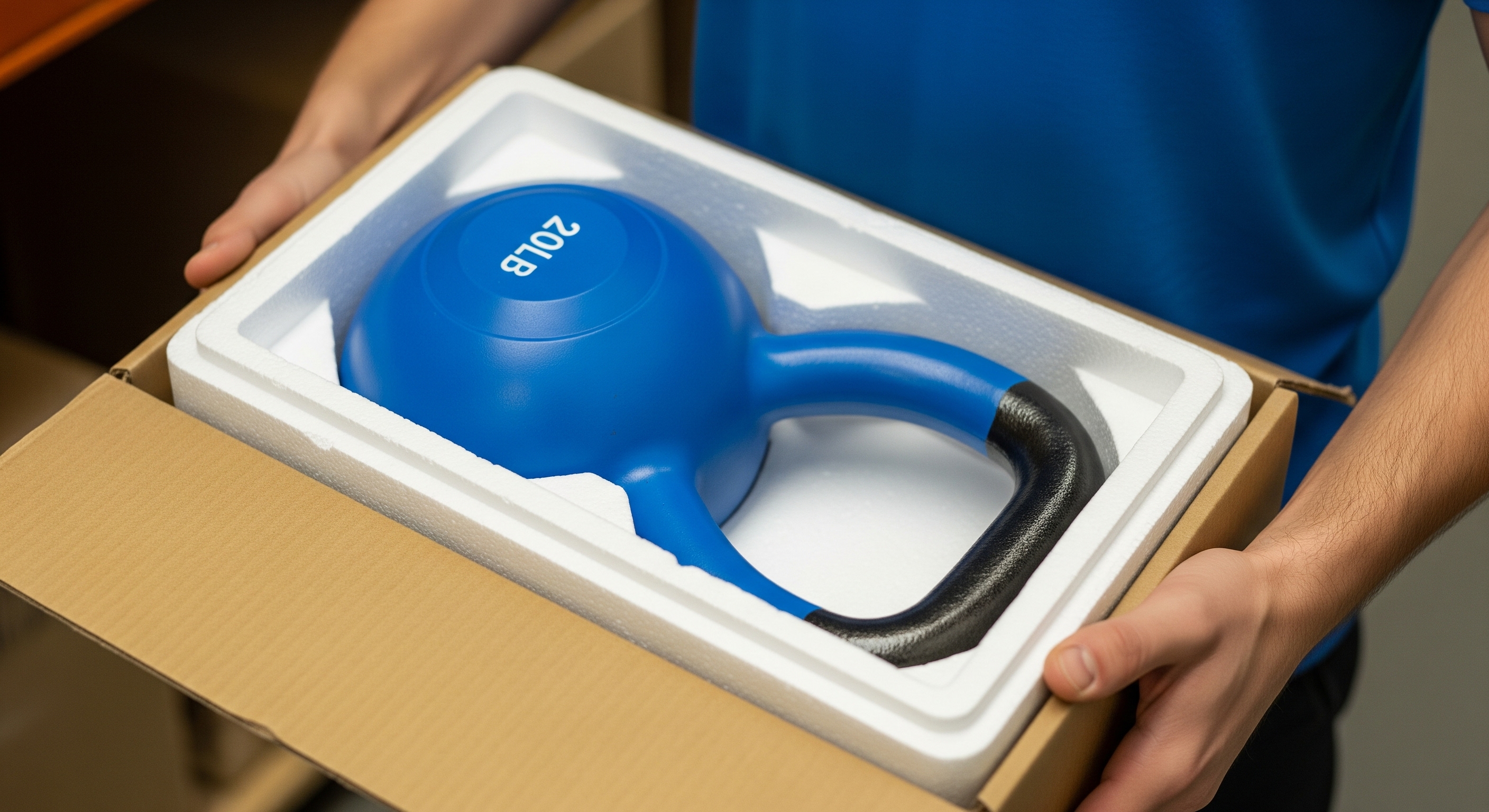
Secure the item to prevent shifting:
Wrap straps or use air pillows so the product doesn’t slide around and get scuffed. For things like yoga mats or resistance bands, poly mailers or padded envelopes can sometimes be used (since these items aren’t fragile), this saves on weight and bulk[42][43]. Just ensure the mailer is durable and won’t tear under the item’s weight or shape.
If you’re shipping mid-sized equipment (say an adjustable bench or a stationary bike), partially disassemble it if possible to make the box smaller[44][45]. Include assembly instructions in the box (and have digital copies on your site) so the customer can easily put it together.
Taking these steps will cut down on shipping costs and damage rates for large but lightweight products.

Protecting Fragile Components:
Surprisingly, many fitness items have delicate parts, think electronic consoles on treadmills, LCD screens on rowers, or even the glass face of a smartwatch. When shipping items with mixed components (some rugged, some fragile), pay extra attention to the fragile pieces.
Wrap screens or electronics in bubble wrap separately[46], and if shipping in the same box as heavy parts, use foam inserts or cardboard dividers to shield them. For example, if a folding treadmill has a control panel, it should be well padded and perhaps boxed within the larger box. The goal is that if the box gets jostled, the heaviest parts won’t crush the most breakable parts.
Also, verify if your product (like certain lithium battery-powered fitness electronics) requires special handling or labeling, many carriers have rules for devices with lithium-ion batteries.
Generally domestic ground shipping is fine for most wearables, but include proper documentation and packaging to prevent any short-circuits (usually the device’s original packaging suffices).
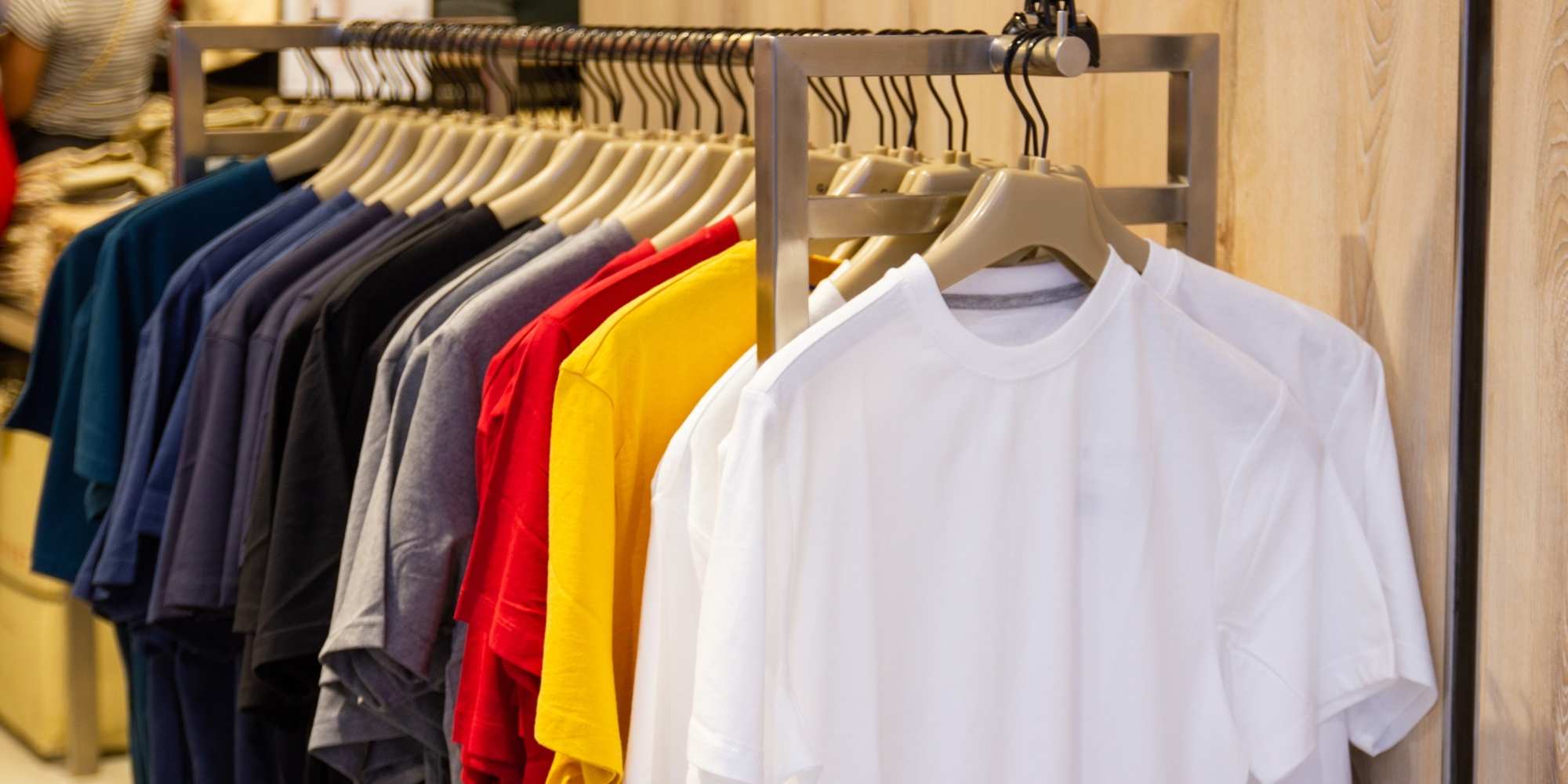
Managing Apparel and Size-Sensitive Items:
Fitness apparel (leggings, shoes, etc.) and wearables can have high return rates due to sizing or user preference. To reduce headaches, implement a clear and user-friendly returns policy.
Many sellers require that clothing returns be unwashed and with tags still on (to prevent “wardrobing,” where someone wears an item then returns it)[47]. Make this policy known up front. It also helps to use resalable packaging for apparel, for instance, send leggings in a sealed poly bag inside the shipping mailer, so if returned, they’re still in good condition.
When a return does happen, inspect items quickly and restock them if they’re in sellable condition, so you’re not losing out. For wearable electronics, consider offering protection plans or easy exchange processes if a device is defective, customers appreciate hassle-free support on pricey items.
And always wipe personal data from returned smart devices for privacy before reselling or refurbishing. By streamlining how you handle returns, you’ll maintain customer trust and recapture value from returned stock.

Efficient Inventory & Shipping for Multi-SKU Orders:
A fitness e-commerce store often carries a variety, from supplements to apparel to equipment, and customers may order an assortment together. This means your fulfillment team might be packing very different items in one box (e.g. a pair of dumbbells and two protein shaker bottles).
Be mindful of how you pack mixed orders: heavy items at the bottom, light items on top, and partitioning between them. You don’t want a metal kettlebell rolling onto a tub of protein powder and cracking it open in transit. Use dividers or separate boxes if needed.
Kitting and bundling is popular in the fitness niche (for example, a “Yoga Starter Kit” that includes a mat, blocks, and strap). If you sell bundles, pre-pack them or at least store the components close together to speed up order fulfillment. Also, stay on top of inventory for seasonal spikes, stock up on January favorites (like fitness journals, jump ropes, etc.) by December, and ensure you have sufficient storage space for bulky items if you anticipate a surge.
Some sellers partner with a 3PL (third-party logistics) provider experienced in fitness products to handle the heavy lifting (literally). A good 3PL can often secure better bulk shipping rates for heavy goods and have packing expertise to prevent damage[48].
Whether in-house or via 3PL, make sure your logistics plan accounts for the unique mix of weight, size, and fragility in the fitness products you sell.
Checklist: Optimizing Your Fitness Product Fulfillment
To wrap up, here’s a quick checklist for ecommerce businesses in the fitness niche to improve logistics and keep customers happy:
- Plan for Seasonal Surges: Mark your calendar for New Year’s, summer, and holiday spikes. Stock up on popular products ahead of these periods and ensure your warehouse can handle the order volume. (Tip: Promote bundle deals for New Year “fitness kickstart” shoppers[49].)
- Use Durable, Right-Sized Packaging: For heavy or bulky gear, choose double-walled boxes or crates and pack to minimize empty space[39]. For long items (foam rollers, mats), use snug packaging to reduce dimensional weight. Always include plenty of cushioning around sharp corners or delicate parts.
- Consider Shipping Options for Heavy Items: Don’t default to standard parcel shipping if it’s not cost-effective. Use ground shipping for moderately heavy items and switch to freight carriers for very heavy shipments. Offering local pickup for gym equipment or partnering with a freight carrier can save you and your customer money on large orders.
- Streamline Apparel Returns: Provide detailed sizing guides and quality photos to set correct expectations. When returns happen, process them quickly, inspect the gear and return it to inventory if possible. Encourage exchanges (different size/color) to save the sale. A clear, fair return policy will build trust (e.g. free returns on shoes, or easy online return label printing).
- Protect Electronics and Batteries: For fitness tech (watches, sensors, etc.), use anti-static bags and ample padding in shipments. Follow all carrier guidelines for lithium batteries (usually devices should be turned off and packed to avoid activation). Adding shipping insurance for high-value electronics or requiring signature on delivery can prevent loss and theft issues.
- Label and Organize Inventory by Category: Keep heavy items in a section equipped with proper lifting tools (carts, team-lift reminders) to avoid handler injury. Store small accessories (like resistance bands, heart-rate straps) in bins or pick racks near the packing station, since they’re often add-ons. A well-organized warehouse layout for fitness products will speed up order assembly and reduce errors.
- Offer Order Tracking and Transparency: Fitness customers are often on timelines (starting a program, etc.), so they value knowing when their gear will arrive. Use reliable shipping services and send tracking info immediately. If a package is oversized and might face a longer transit, communicate that at checkout (for example, “This item ships via freight and may take an extra week”). Setting the right expectations leads to higher satisfaction[50].
- Prioritize Customer Support for Assembly/Use: A unique aspect of fitness gear is that customers may need help using or assembling the product. Be proactive: email them assembly instructions or how-to videos for equipment purchases, and have support ready to answer questions. This reduces returns (“I couldn’t figure this out” or “it wasn’t what I expected”) and improves reviews. Happy customers who get the most out of their purchase are more likely to become repeat buyers.
From smart inventory planning to careful packaging and customer support, ecommerce sellers can master the fulfillment side of the fitness boom. The year 2025 offers tremendous opportunity in the fitness market, as consumers continue to invest in their health and wellness. By stocking the top fitness products, aligning with key trends, and excelling at fulfillment, your online store can flex its way to stronger sales and delighted customers.
Sources:
- CJdropshipping Blog – “Top 10 Dropshipping Fitness Products in 2025” (market trends and popular product insights)[1][2][17][6].
- Dropshipping.com – “Top Fitness Dropshipping Products for 2025” (data on best-selling items and trends)[51][52][27][3].
- ACSM, “Top Fitness Trends for 2025” (wearable tech ranking and industry context)[11].
- Gymdesk – “25 Fitness Industry Trends to Watch for 2025” (post-pandemic hybrid trend, recovery trend)[19].
- Pregis Packaging – “How to Ship Fitness Equipment, Apparel…Without Breaking a Sweat” (shipping heavy gear challenges and solutions)[38][53].
- Couriers & Freight – “Complete Guide to Shipping Gym Equipment” (packing advice for bulky machines and disassembly tips)[44][39].
- Dimension Market Research – “Fitness Apparel Market…Forecast 2025” (market size and growth of activewear)[26].
- Coresight Research via NRF – Online Apparel Returns Data (average return rate for apparel e-commerce)[35].
Ready to talk fulfillment solutions? The team at eFulfillment Service is happy to help answer questions and set you up for fulfillment success. Here’s to fewer headaches and more growth ahead!




0 Comments